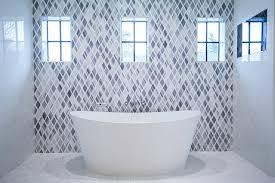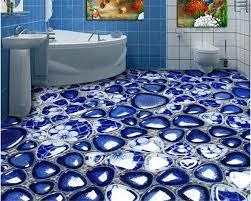
Kitchens, baths, and laundry rooms are all excellent places to employ bathroom tiles because of their long-lasting nature and the high traffic volume they get. This long-lasting material, which is often used for backsplashes, floors, and showers, is quite simple to keep clean with regular washing. Bathroom tiles stains, on the other hand, may rapidly build in and become difficult to clean when spills or other mishaps occur. Showers with tiled walls and floors may accumulate tenacious stains from hard water and rust over time, necessitating a thorough cleaning. To keep your floor or backsplash looking as good as new, follow these instructions on how to clean stains from tiles.
Tips for removing stains off ceramic, porcelain, slate, and other types of tiles
Bathroom tiles may be created from a variety of materials, including ceramic, porcelain, marble, slate, and other types of natural stone. Ceramic bathroom tiles are the most common kind of bathroom tiles used today. Each one has its own set of cleaning and maintenance recommendations, which are important to remember while removing bathroom tiles stains from a floor. If you’re not sure which stain removal procedure is appropriate for your situation, consult the manufacturer for precise advice.
Glossy ceramic and porcelain bathroom tiles are normally quite resilient and can withstand most bathroom tiles’ stain cleaning treatments with little to no difficulty. Stains on natural stone, such as limestone, travertine, or marble tiles, should, on the other hand, be handled with special care to avoid permanent discoloration. The use of traditional cleaners, which frequently include chemicals that might harm the surface, is strongly advised. Instead, non-abrasive cleaners that are created particularly for natural stone should be used instead. If you have natural stone, avoid using cleansers that include acidic substances such as lemon or vinegar. Also, avoid using stiff-bristled brushes that might harm the surface.
How to Remove Stains from Tiles
Without adequate maintenance, bathroom tiles may be harmed, despite the fact that it seems and feels impenetrable to harm. Before cleaning, test your stain-removal approach on an inconspicuous piece of bathroom tiles and grout to ensure that it works. Nonabrasive all-purpose cleanser ($3, Target) or a tub, bathroom tiles, and sink cleaning solution ($2, The Home Depot) will typically be sufficient to remove most bathroom tiles stains and odors. To remove persistent stains from bathroom tiles, use one of the methods listed below.
Blood: Using a delicate cloth drenched in hydrogen peroxide or diluted bleach, dab the stain to remove it.
Whether it’s coffee, tea, or juice: After washing the stain with a light detergent and hot water, wipe it with hydrogen peroxide or diluted bleach to remove any remaining residue.

Placing ice cubes in a sealable plastic bag and placing the bag over the substance you wish to remove off the bathroom tiles can help to break up gum, wax, and tar. As soon as the substance has solidified, use a crafts stick to scrape away as much of it as you can. Any leftover residue should be cleaned off with nonflammable paint thinner.
Those stains that are made of grease or fat: Club soda and water, or a non-abrasive floor cleanser, should be used to remove the stain.
In the case of ink or dye stains, soak a clean cloth in diluted bleach and place it over the spot. Allow the cloth to remain in place until the stain has been removed. Make sure to thoroughly rinse.
Iodine stain: Using diluted ammonia, scrub the iodine stain and rinse well.
Nail polish: Use nail polish remover to get rid of the nail polish stain that has formed. If the stain persists, rub it with hydrogen peroxide or diluted bleach until it disappears completely.
How to Get Rid of Hard Water Stains on Ceramic Bathroom tiles
Hard water stains may accumulate over time in tiled areas such as showers and around faucets and sinks, resulting in a filmy residue on the surface of the bathroom tiles. Avoid using abrasive cleaners or scouring powders on the tile’s finish in order to avoid scratching or scuffing the surface. Instead, use vinegar to break down the mineral buildup so that it may be readily removed with a damp cloth. (Keep in mind that this procedure should only be used on bathroom tiles surfaces that are acid-resistant, such as glazed ceramic or glass.
Natural stone bathroom tiles are not designed to be used with this product.) Wet a cloth or sponge with vinegar and wipe it around the surface to moisten it. Immediately after letting the vinegar seep into the bathroom tiles for a few minutes, wipe the area to re-moisten it. Sprinkle a tiny quantity of baking soda over the bathroom tiles (it should bubble a little as it interacts with the vinegar), then gently scrape the surface with a sponge moistened with water to remove any remaining baking soda residue. Rinse the area well with water to remove any remaining vinegar and baking soda, then dry the bathroom tiles promptly with a soft towel to avoid the formation of more wet stains.
How to Get Rid of Rust Stains on Ceramic Bathroom tiles
Rust stains, which are common in bathroom tiles showers and on bathroom tiles floors, are caused when metal objects on bathroom tiles surfaces come into touch with moisture for an extended length of time. A mixture of common home substances may be used to remove these dark orange stains from carpets and upholstery. Apply a paste made of equal parts lemon juice and borax ($4 at Walmart) on the rust stain, gently rubbing it in with your fingers. Allow the paste to dry completely before rinsing well with water and drying thoroughly with a clean towel. If the stain continues to appear, repeat the procedure until the rust is completely removed.
Final thoughts
With the different cleaning strategies discussed in this article, you should have a good idea of how to clean your bathroom tiles’ surface. The best part is that the strategies mentioned in this article can be done with simple and everyday household materials. Feel free to go over it again for proper grasping.

